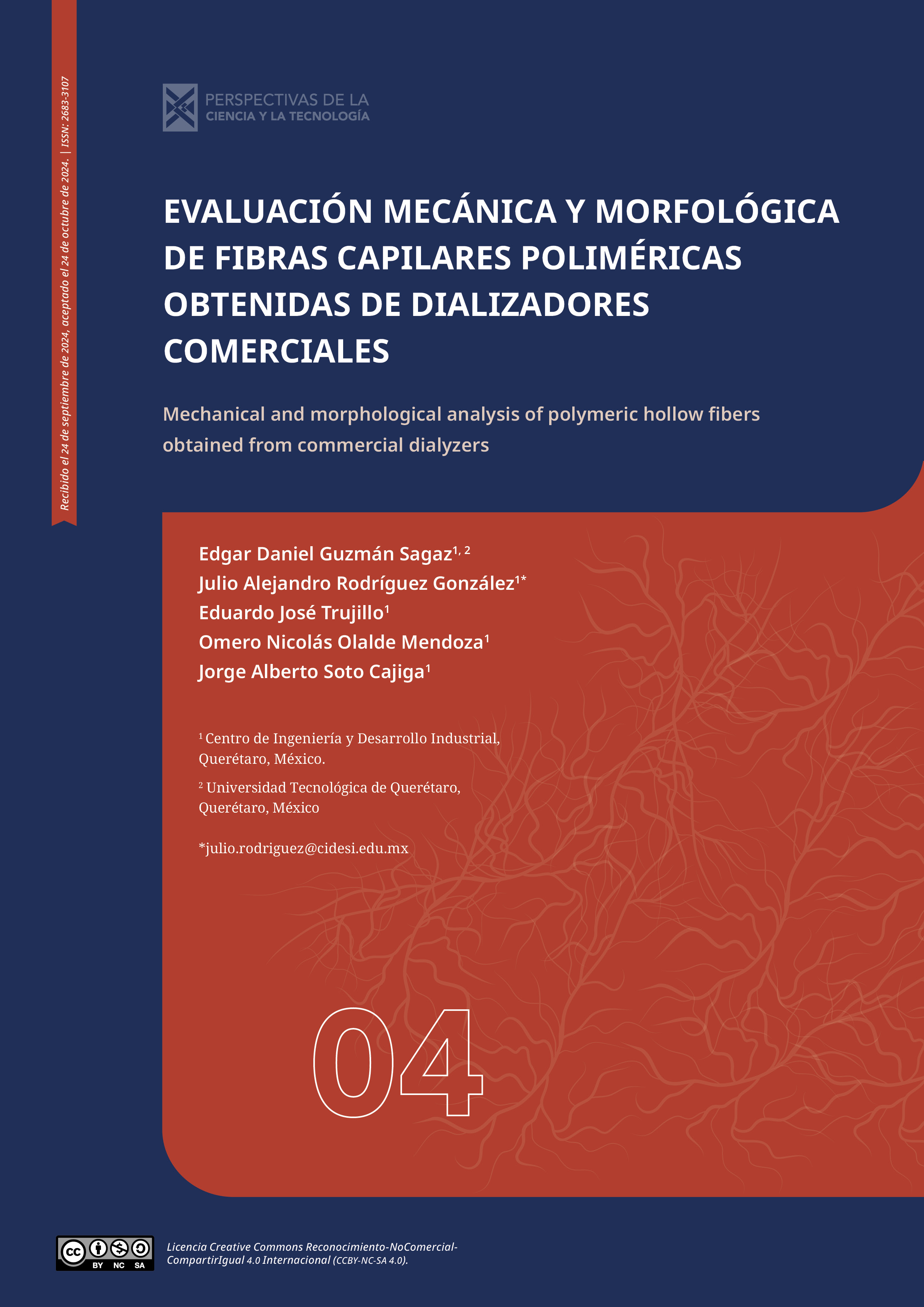Abstract
Hemodialysis filter membranes are one of the essential and key components for the removal of uremic toxins in hemodialysis processes, however, there is little information on their mechanical and morphological characteristics that have been reported. The objective of this work is to perform a morphological analysis of membranes based on polymeric hollow fibers obtained from two commercial hemodialysis filters and compare their mechanical performance. The morphological analysis was carried out using an optical and scanning electron microscope and mechanical evaluation by means of tensile tests. The optical results show that the hollow fibers of the dialysis filters are relatively well distributed, which can be seen along the filter in a wavy and curly form. The measurements of the internal diameter of the fibers resulted in values between 160-200 m while for the wall thickness between 30-40 m, which are in accordance with the typical values for this class of fibers. Tensile tests on polymeric capillary fibers showed greater mechanical performance in polyethersulfone fibers compared to polysulfone fibers, which could result in a longer lifespan of filters with this type of polymeric fibers, opening the possibility for a greater number of uses.
References
Ying X. et al. (2024). Elution-free hollow-fiber membranes of block copolymers for hemodialysis balancing protein retaining and toxin clearance. Journal of Membrane Science 695 (2024) 122457. https://doi.org/10.1016/j.memsci.2024.122457
Bello A. et al. (2023). ISN–Global Kidney Health Atlas: A report by the International Society of Nephrology: An Assessment of Global Kidney Health Care Status focussing on Capacity, Availability, Accessibility, Affordability and Outcomes of Kidney Disease. International Society of Nephrology, Brussels, Belgium. 10.1001/jama.2017.4046
Said N. et al. (2021). A Review of Commercial Developments and Recent Laboratory Research of Dialyzers and Membranes for Hemodialysis Application. Membranes 2021, 11(10), 767; https://doi.org/10.3390/membranes11100767
Bowry y Chazot (2021). The scientific principles and technological determinants of haemodialysis membranes. Clin Kidney J. 27;14(Suppl 4):i5-i16. doi: 10.1093/ckj/sfab184
O.E.M. ter Beek et al. (2020). Hollow fiber membranes for long-term hemodialysis based on polyethersulfone-SlipSkin™ polymer blends. Journal of Membrane Science 604 (2020) 118068. https://doi.org/10.1016/j.memsci.2020.118068
Nguyen T.T. et al. (2022). Fabrication of hollow fiber membranes with different inner diameters for enhanced uremic toxins removal in hemodialysis: Exploring from high-flux to high molecular weight retention onset classes. Journal of Membrane Science 663 (2022) 121065. https://doi.org/10.1016/j.memsci.2022.121065
Ghofrani B. et al. (2023). Fabrication and characterization of novel PES-based nanocomposite hollow fiber membranes for the hemodialysis process. Separation and Purification Technology 317 (2023) 123939. https://doi.org/10.1016/j.seppur.2023.123939
Alasfar R. et al. (2022). Preparation and Characterization of Polysulfone Membranes Reinforced with Cellulose Nanofibers. Polymers 2022, 14, 3317. https://doi.org/10.3390/polym14163317
Qin y Chung (1999). Effect of dope flow rate on the morphology, separation performance, thermal and mechanical properties of ultrafiltration hollow fibre membranes. Journal of Membrane Science 157, 35-51. https://doi.org/10.1016/S0376-7388(98)00361-5

This work is licensed under a Creative Commons Attribution-NonCommercial-ShareAlike 4.0 International License.
Copyright (c) 2025 Perspectivas de la Ciencia y la Tecnología

